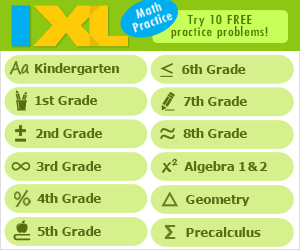7th Grade Science Standards - Life Science
Links verified 4/29/2024
Checks for Understanding (Formative/Summative Assessment)
0707.1.1 Cells - Examine and describe plant and animal cells using compound microscopes 0707.1.2 Major Cell Organelles - Identify the function of the major plant and animal cellular organelles 0707.1.3 Venn Diagram - Make a Venn diagram to compare the structures and functions of an animal cell with a city or school 0707.1.4 Cell Model - Build a 3-D model of a cell 0707.1.5 Make a Poster - Construct a poster that illustrates the hierarchy among cells, tissues, organs, organ systems, and organisms 0707.1.6 Organ Systems - Describe the function of different organ systems 0707.1.7 System Interaction - Explain how different organ systems interact to enable complex multi cellular organisms to survive 0707.1.8 Cellular Organization - Apply the idea of the division of labor to explain why living things are organized into cells, tissues, organs, and organ systems 0707.1.9 Cell Division - Model the movement of chromosomes during plant cell division 0707.1.10 Diffusion - Design a demonstration that illustrates how materials move across a semi-permeable membrane by simple diffusion 0707.3.1 Process of Photosynthesis - Associate the fundamental processes of photosynthesis and respiration with appropriate cell structures 0707.3.2 Chloroplasts - Examine and identify the chloroplasts in a leaf cell 0707.3.3 Plants Make Food - Identify the materials used by plants to make food 0707.3.4 Photosynthesis and Respiration - Create a chart that compares the reactants and products of photosynthesis and respiration 0707.3.5 Plant Respiration - Model the pathways of water, oxygen, and carbon dioxide through a plant 0707.3.6 Oxygen and Carbon Dioxide Cycles - Describe the movement of oxygen and carbon dioxide between living things and the environment 0707.3.7 Animal Respiration - Describe structures that animals use to obtain oxygen 0707.4.1 Reproduction - Classify organisms according to whether they reproduce sexually or asexually 0707.4.2 Flower Function - Label and explain the function of the reproductive parts of a flower 0707.4.3 Pollination - Describe various methods of plant pollination 0707.4.4 DNA - Investigate the relationship among DNA, genes, and chromosomes 0707.4.5 Traits - Explain the differences between dominant and recessive traits 0707.4.6 Punnett Square - Use a Punnett square to predict the genotypes of offspring resulting from a monohybrid cross 0707.4.7 Random Traits - Draw a phenotypically accurate picture of an individual whose traits are modeled by the roll of a die State Performance Indicators
SPI 0707.1.1 Cell Organelles - Identify and describe the function of the major plant and animal cell organelles SPI 0707.1.2 Systemic Relationship - Interpret a chart to explain the integrated relationships that exist among cells, tissues, organs, and organ systems SPI 0707.1.3 Organ Systems - Explain the basic functions of a major organ system SPI 0707.1.4 Plant Cell Division - Sequence a series of diagrams that depict chromosome movement during plant cell division SPI 0707.1.5 Simple Diffusion - Explain how materials move through simple diffusion SPI 0707.3.1 Photosynthesis - Compare the chemical compounds that make up the reactants and products of photosynthesis and respiration SPI 0707.3.2 Oxygen, Carbon Dioxide Exchange - Interpret a diagram to explain how oxygen and carbon dioxide are exchanged between living things and the environment SPI 0707.4.1 Methods of Reproduction - Classify methods of reproduction as sexual or asexual SPI 0707.4.2 Flower Reproduction - Match flower parts with their reproductive functions SPI 0707.4.3 Genetics - Describe the relationship among genes, chromosomes, and inherited traits SPI 0707.4.4 Interpret Punnett Square - Interpret a Punnett square to predict possible genetic combinations passed from parents to offspring during sexual reproduction
Search Internet4Classrooms

Custom Search






